
What drives your ecommerce growth?
That’s a huge question, I know. Before you answer, let me narrow down your options.
First, you’re only allowed to use data. Second, an either-or hypothesis: either it’s marketing strategies rooted in the stories your target audience already inhabits … or, your ad account.
For most ecommerce businesses, it’s the ad account. And that dependency on paid marketing activities creates an ugly catch-22, a codependent cycle littered with lower and lower returns.
How do you break free?
Answer: An ecommerce marketing calendar that makes the most of your peaks without interrupting cash flow in the valleys.
Sneak a peek into the ecommerce marketing calendar breakdown …
- What Most Ecommerce Marketing Strategies Get Wrong
- Why You Need a ‘Four-Peaks Theory’ Marketing Calendar
- How to Plan for Growth: Three Strategies to Fill the Gaps
- When to Launch: Holidays, Examples, and 📅 Template
- Who Really Determines Your Social Media Marketing Plan?
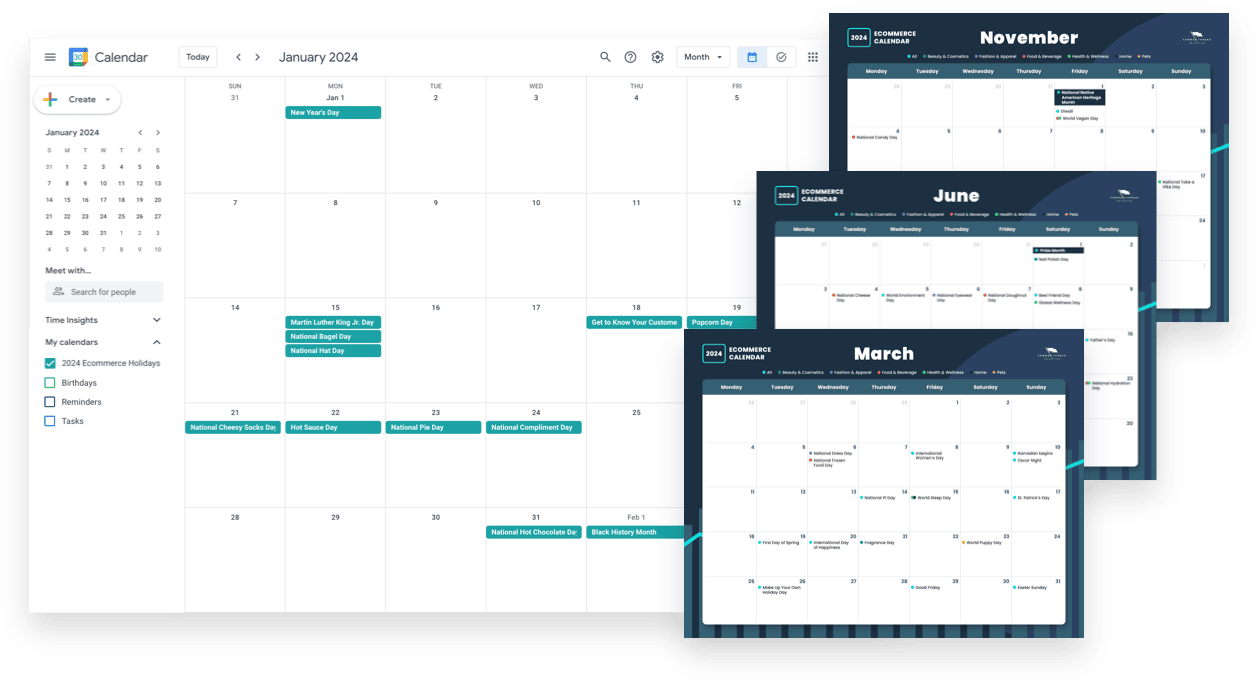
What Most Ecommerce Marketing Strategies Get Wrong
If you were to survey most ecommerce businesses, you’ll see they rely on a two-peaks revenue model and, therefore, a two-peaks content calendar.
Twice a year, marketing campaigns spike. These spikes center around the important Q4 holiday season plus an additional gifting moment — usually, Father’s Day, Mother’s Day, Valentine’s Day, etc.
In fact, you don’t have to survey anyone.
Because we own and operate multiple ecommerce brands, we can show you exactly what this looks like behind the scenes.
FC Goods sells hand-crafted, vintage baseball glove wallets. We acquired the brand in 2018 and saw a 15,500% ROI after we sold it in 2020 (seriously).
Its product is tailor-made for gifting. So, its calendar majored on two moments — and two moments only. Black Friday, Cyber Monday and Father’s Day:
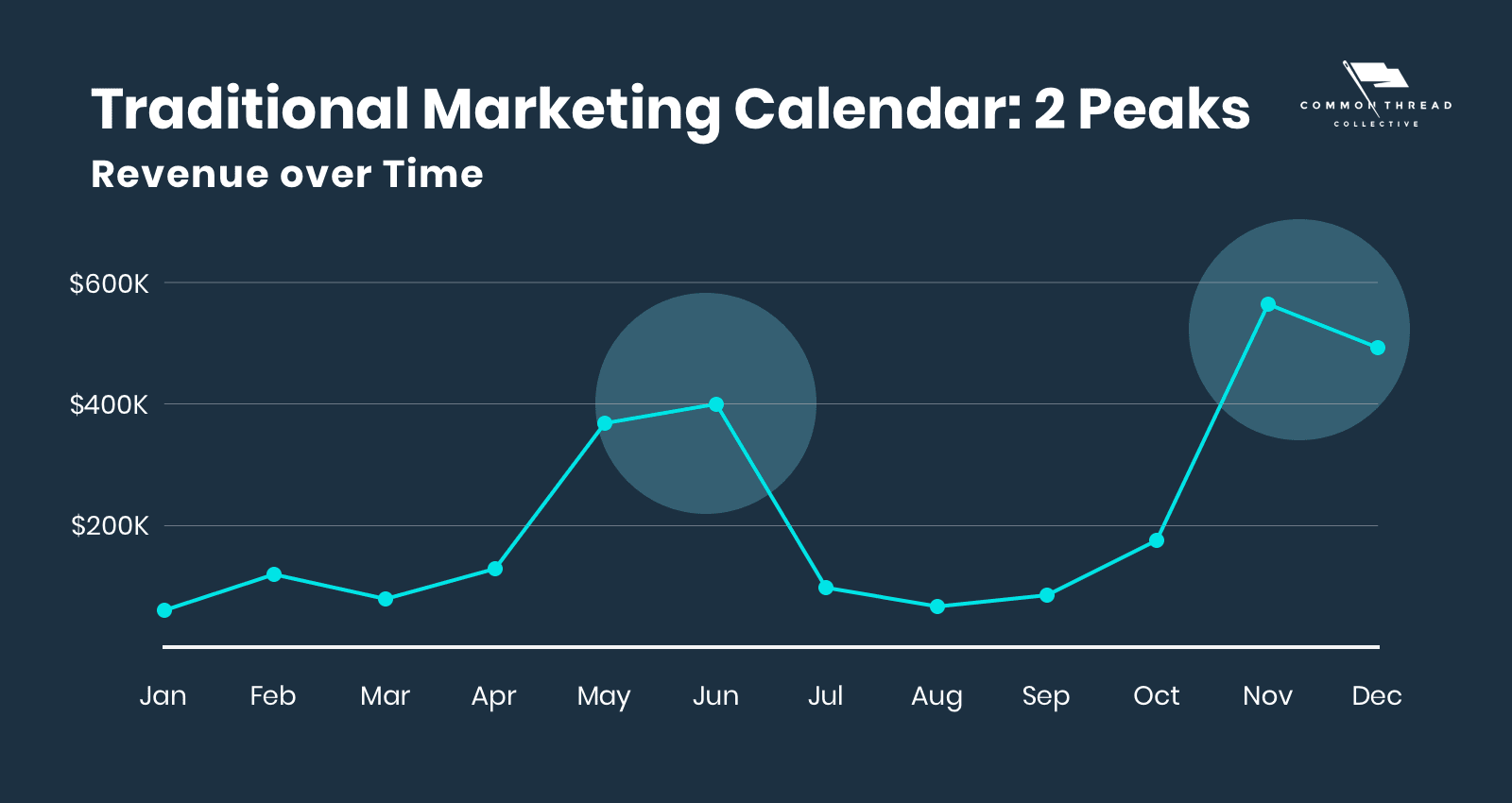
Between those peaks lay valleys where ad spend, return on ad spend (ROAS), and overall growth declined.
Were we different advertisers in the low points? Was our marketing team worse at their jobs? Did we make less awesome social media ads than at any other period of the year?
Of course not.
Some of our most creative work was forced to happen in the valleys — particularly our email marketing, social-media calendar, and editorial calendar. Why? Because there was no natural story, narrative, or impetus for purchase.
At least that’s what we thought.
What you’ll see in your own ad account is spend volume (marketing budgets) following this graph:

Is the ad account driving the moment or is the moment driving the ad account?
In the case of FC Goods, it was the latter. Conversion rates spiked in key gift giving periods … then, essentially flatlined.
With these spikes comes increased risk due to decreased cash flow. By not relying on accurate forecasts, you run the risk of under or overspending on inventory.
Peaks require more inventory. Unfortunately, cash runs low immediately before you really need it. A big problem for small businesses, especially.
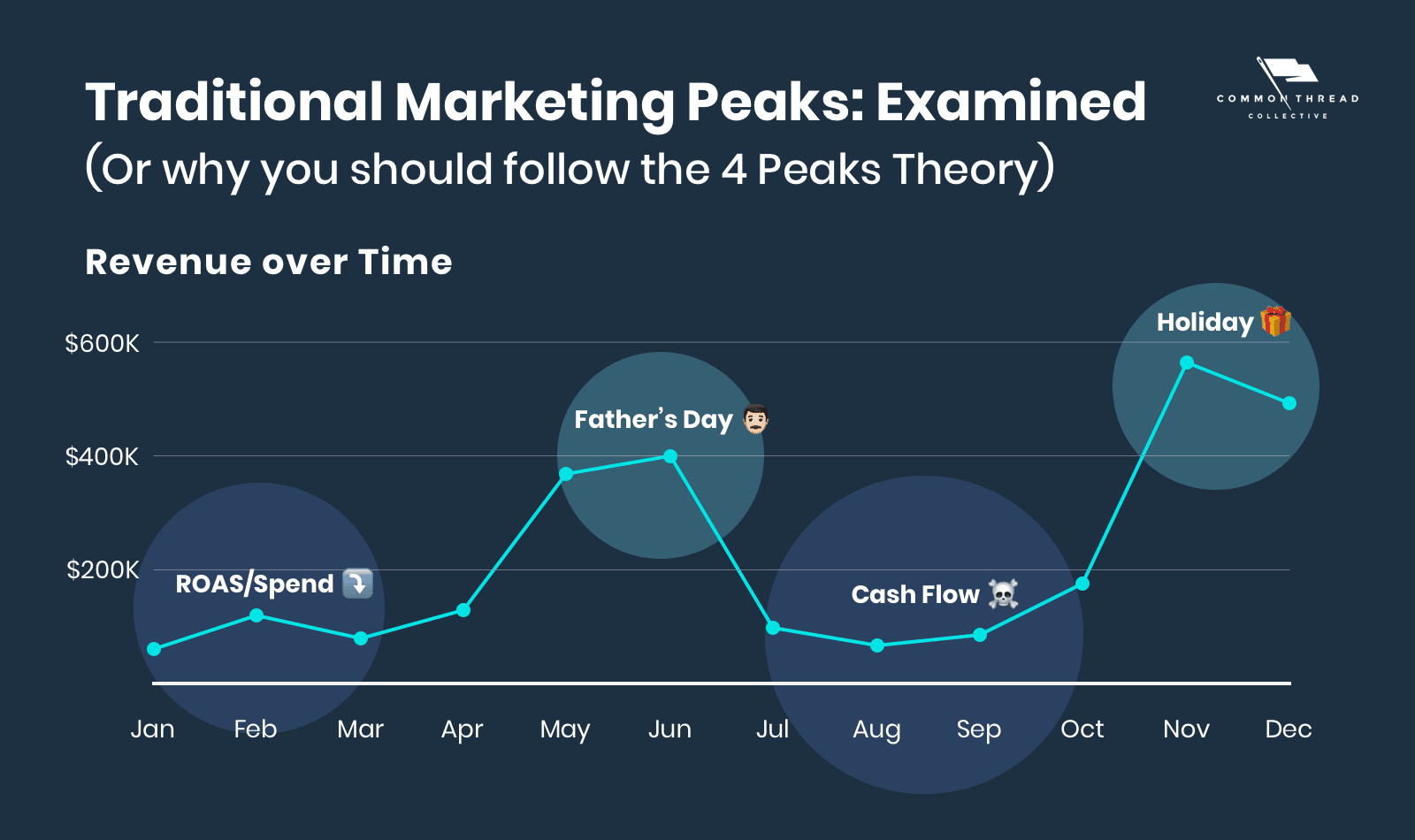
Why You Need a ‘Four-Peaks’ Ecommerce Holiday Marketing Calendar Instead
To combat these scenarios, we use the Four-Peaks Theory to shape our own marketing calendars as well as the calendars of our clients:
Year-round growth comes from a calendar with at least four peaks.

With this model, you take advantage of the traditional holiday season, major gifting celebrations, and both cultural moments (i.e. Earth Day, April Fool’s Day, or International Coffee Day) as well as product events.
You get a calendar that drives performance through storytelling and imperative purchase opportunities.
How to Create a Calendar for Growth: Three Strategies to Fill the Gaps
When creating your calendar, there are three strategies that will help you choose the right peaks. They center around …
- Holidays
- Cultural moments
- Cyclical product releases
The goal is to align with your customers’ needs. To provide them with what they want without relying on deep discounts.
Once you’ve identified existing high points, you can start filling in your off-seasons. To form your peaks, alternate between two holidays and two cultural moments.
Let’s take a look at the major holidays that can help you complete your calendar.
When to Launch: Major Holidays for Your 📅 Marketing Campaigns
To make this process easy, we’ve created an ecommerce marketing calendar example. Build at least four peaks for major moments into your marketing plan for 2024.

Q1: First Peak
New Year’s Day
The top of the year focuses on one big holiday idea — new beginnings (a la New Year’s resolutions). New Year’s Eve and New Year’s Day are some of the best marketing environments for health, wellness, and sports brands.
Use this time for product launches and brand-awareness campaigns that will attract new customers and retarget existing customers from Q4.
Lululemon launched an entire collection for the Lunar New Year to do exactly that.

Conversely, another one of our brands — Modern Fuel — took an unconventional approach:
- Kickstarter
- SMS + email for customers
- And Facebook ads for prospecting
“I wanted a big event where I could manufacture a peak in Q1 to support new marketing goals during a time that’s typically an offseason for this product.”
— David Rekuc, Brand Manager at 4x400
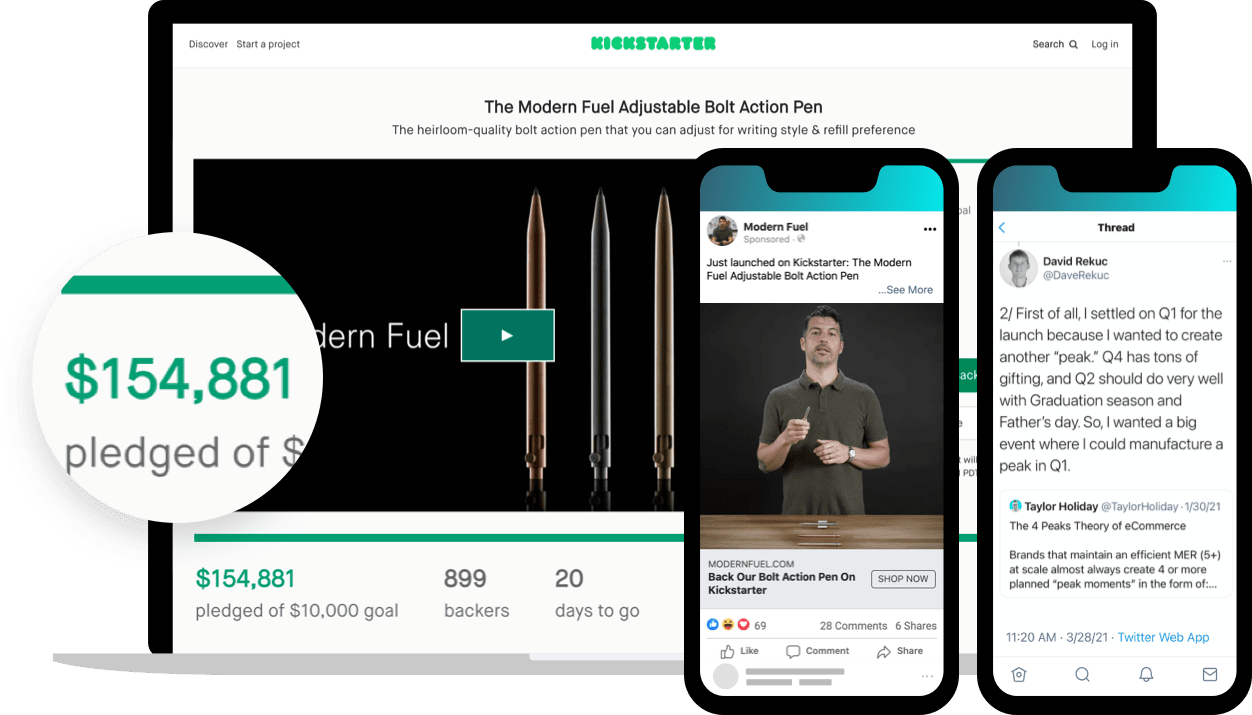
Valentine’s Day
Valentine’s Day is the perfect time to jumpstart first-quarter sales. It’s one of those holidays where customers are obsessed with shopping for loved ones. While jewelry stores see a lot of action, other industries such as sporting goods, apparel, and beauty also get tons of traffic.
Keep in mind that Valentine’s Day isn’t solely about romantic relationships. Platonic friendships, self-love (think Galentine’s Day), and even familial relationships are celebrated, too.
Most purchases fall between February 8-11 so running promotions early is critical when planning.
Q2: Second Peak
Memorial Day
For Memorial Day, anything from food to clothing to home furnishing works best to boost your peaks. Just make sure you are drawing strong parallels to patriotism.
Gifting isn’t typical. Rather, discounting dominates.
Born Primitive, on the other hand, has a large military customer base. Memorial Day is ingrained in its brand. It uses this time to honor veterans and support military personnel.
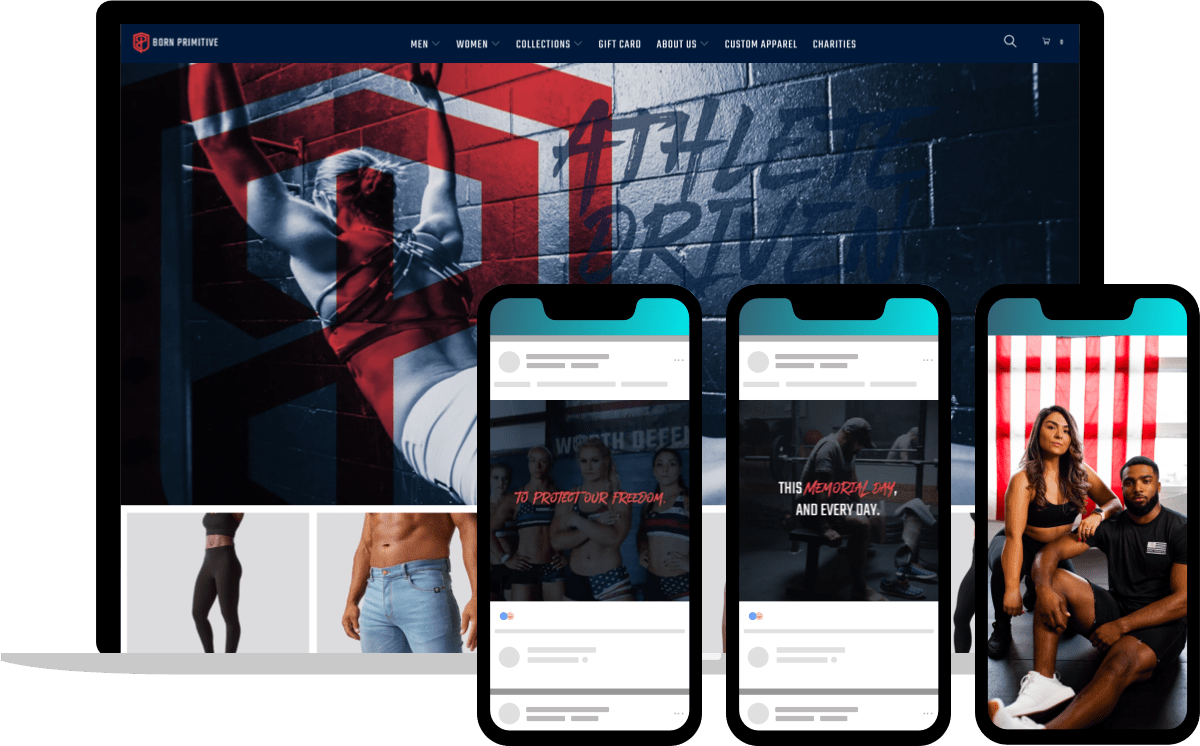
Mother’s Day
With $26.7B in sales, Mother’s Day is the third-largest retail event in the US. One thing to remember, mothers come in many different forms. Your brand should be sensitive to that fact.
Mother’s Day can also drive organic traffic through content marketing — social-media posts, email marketing, infographics, and blogs about the mothers your customers love.
Bambu Earth, our fastest-growing in-house brand, asked customers to share their Mom Stories. It was one of those “hit you in the feels” kinda campaigns.
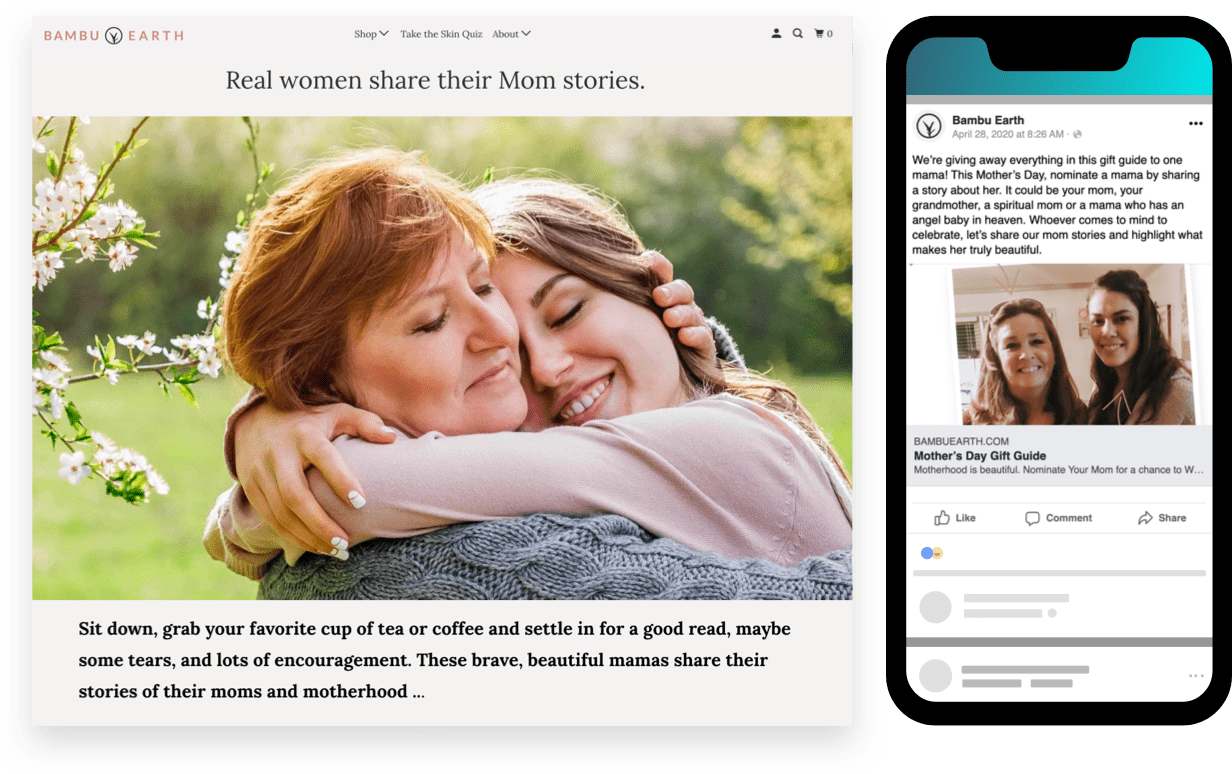
Father’s Day
Like Mother’s Day, Father’s Day presents a great gifting moment. It also helps that both holidays run back-to-back. This develops an environment for a successful Q2 peak.
Stay inclusive and focus more on the essence of fatherhood versus what you think fatherhood looks like.
FC Goods used its “Past Time Custom Program” to tell Ray Cordova, Jr.’s amazing story. He was the first person to receive custom wallets made from his late father’s baseball gloves. The wallets were then personally delivered to his house.
Q3: Third Peak
Summer Season
The start of summer is an ecommerce event all of its own. This is where brands are heavily pushing beachwear, summer fashions, and footwear. Think: Independence Day (the 4th of July).
Essentially, it’s a race to make an impact before the midway point. Then, push sales to clear out remaining inventory. Weight your marketing budget accordingly and plan to go hard on paid marketing channels in the lead up … then optimize for retention towards the end.

Back to School
The back-to-school shopping holiday encourages marketers to take advantage of a great opportunity across several verticals — clothing, health and wellness, even home furnishing.
Ecommerce tech and supplies retailers can build momentum for this event by recreating what back-to-school shopping looks and feels like on-site with creative in marketing campaigns.
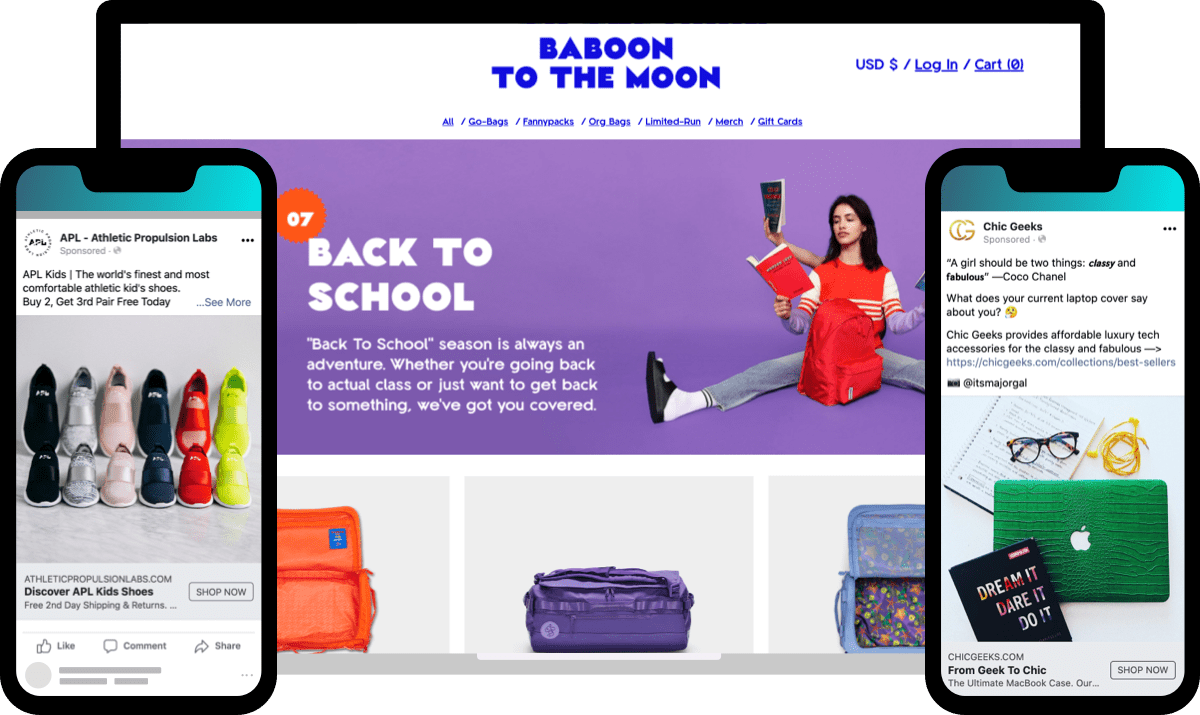
Don’t forget to devote some marketing efforts to Labor Day too, with a discount code or promo offers to celebrate the incoming fall season.
Q4: Fourth Peak
For most ecommerce brands, Q4 is the big show.
During this time, we have Halloween, Black Friday, Cyber Monday, and Christmas.
Even though sales reign supreme, your holiday marketing can be built around a variety of deal structures:
- Sitewide discounts
- Selected SKUs or collections
- Free gifts with purchase
- Buy X, Get Y (BOGO)
- Tiered savings based on spend

Amid all that, there’s room to squeeze in a feel good story or two.
Milano Di Rouge crafted a fun and nostalgic take on the hit sitcom Family Matters for its Black-Friday campaign. Instead of pushing a sale, it gave its audience memorable vibes they could feel.
Who Really Determines Your Social Media Marketing Plan? (Hint, Not You!)
Where does your story exist? How do you think about this in a way that’s going to help your cashflow?
Your important dates don’t have to exclusively focus on running sales or pushing products.
Storytelling is how you humanize your brand. Particularly, unconventional stories through different channels. During the holiday season, instead of pushing big promotions, Amazon went with a feel good message in its “The Show Must Go On” ad.
Mirroring those sentiments, Nike inspired and motivated by highlighting its customer’s resiliency in You Can’t Stop Us.
“We know things won’t always go our way but whatever it is, we’ll find a way.”
As a luxury brand, deep discounts aren’t a part of APL’s marketing efforts.
Instead, it launched special edition shoes for Breast Cancer Awareness month — offering 25% off on International Women’s Day. That one day made up 4% of its annual revenue: a glowing achievement, considering Nov. contributed 16% in total.
Hone in on what your customers care about. Give them a memorable experience surrounding that.
So, what really drives growth?
It’s not the ad account. At least, it shouldn’t be. Your ad account can, however, show you where your needs are: the valleys.
It’s up to you to raise those valleys during the toughest times of the year with the Four-Peaks and an Ecommerce Marketing Calendar.
We won’t send spam. Unsubscribe from Common Thread Collective at any time.
